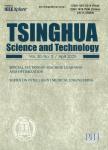版权所有:内蒙古大学图书馆 技术提供:维普资讯• 智图
内蒙古自治区呼和浩特市赛罕区大学西街235号 邮编: 010021

作者机构:Department of Automation Tsinghua University National Laboratory for Information Science and Technology (TNList) Tsinghua University Graduate School of Tsinghua University
出 版 物:《Tsinghua Science and Technology》 (清华大学学报(自然科学版(英文版))
年 卷 期:2019年第24卷第2期
页 面:160-170页
核心收录:
基 金:supported in part by the National Natural Science Foundation of China(Nos.61673233 and71671100)
主 题:connected vehicle intersection traffic control simulation system speed guidance
摘 要:In the connected vehicle environment, real-time vehicle-state data can be obtained through vehicle-toinfrastructure communication, and the prediction accuracy of urban traffic conditions can significantly *** study uses the C++/Qt programming language and framework to build a simulation platform. A two-way six-lane intersection is set up on the simulation platform. In addition, two speed guidance algorithms based on optimizing the travel time of a single vehicle or multiple vehicles are proposed. The goal of optimization is to minimize the travel time, with common indicators such as average delay of vehicles, average number of stops, and average stop time chosen as indexes of traffic efficiency. When the traffic flow is not saturated, compared with the case of no speed guidance, single-vehicle speed guidance can improve the traffic efficiency by 20%, whereas multi-vehicle speed guidance can improve the traffic efficiency by 50%. When the traffic flow is saturated, the speed guidance algorithms show outstanding performance. The effect of speed guidance gradually enhances with increasing penetration rate, and the most obvious gains are obtained when the penetration rate increases from 10% to 40%. Thus, this study has shown that speed guidance in the connected vehicle environment can significantly improve the traffic efficiency of intersections, and the multi-vehicle speed guidance strategy is more effective than the single-vehicle speed guidance strategy.